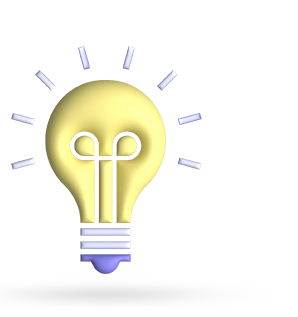
- July 11, 2024
- Digital Marketing, website development
- Web development
Table of Contents
Blockchain in web development is a decentralized digital ledger that maintains security, immutability, and transparency by recording transactions across several computers. Blockchain functions on a peer-to-peer network, where each member (node) maintains a copy of the complete ledger, in contrast to traditional databases that are administered by a single institution.
Important Blockchain Elements
- Transaction data is stored in units called blocks. A chain is formed by each block including a list of transactions and a reference to the block before it.
- The arrangement of interconnected blocks. Because of this connection, once a block is introduced, it cannot be changed without also affecting all of the blocks that come after it.
- Nodes are computers that are member of the blockchain network and that individually contain a copy of the blockchain.
- Proof of Work (PoW) and Proof of Stake (PoS) protocols or Proof of Stake (PoS), which nodes employ to determine whether a transaction is legitimate and maintain the ledger’s integrity.
The Advantages of Blockchain Technology

- Security: The data in the blockchain is protected from tampering and unwanted access thanks to cryptographic algorithms.
- Transparency: By making all transactions accessible to all parties involved, trust and accountability are fostered.
- Decentralization: The absence of a single controlling body on the blockchain lowers the possibility of corruption and centralized points of failure.
- Immutability: Once recorded, data on the blockchain cannot be altered or removed because it is permanent and verifiable.
Thanks to its strong security features and decentralized structure, blockchain is a perfect technology for many different applications, such as supply chain management, financial services, and increasingly, web development. Blockchain technology can be incorporated into web development to improve security, transparency, and functionality opening the door for creative and unreliable online apps.
Crucial Elements of Blockchain

- Blocks: They are discrete data pieces that hold transactional information. Every block consists of the transaction data, the preceding block’s hash, and a distinct code known as a hash. Because of this linking, a chain of blocks is created, thus the term “blockchain.”
- Chains: A chain is made up of multiple linked architectural pieces. This structure ensures that once data is recorded, it is nearly impossible to update without also changing every subsequent block.
- Nodes: The nodes that make up the network have copies of the whole blockchain on them.
- Consensus Mechanisms: Nodes utilize these protocols to reach a consensus over the legitimacy of transactions. Two common consensus methods are Proof of Work (PoW) and Proof of Stake (PoS).
Blockchain's Effect on Different Industries
- Financial Services: Blockchain lowers operating expenses and fraud by enabling safe, transparent transactions.
- Supply Chain Management: Blockchain technology improves accountability and traceability, which makes it simpler to monitor the origin and flow of commodities.
- Healthcare: By providing allowed access to data and securely storing patient information, blockchain technology helps protect patient privacy.
- Web development: By incorporating blockchain technology, security may be improved. Development can improve functionality, security, and transparency. It makes it possible to develop smart contracts and decentralized applications (DApps), which automate and secure transactions without the need for middlemen.
The Role of Blockchain Technology in Web Development
- Immutable Records: Data cannot be changed or removed once it is recorded thanks to blockchain’s immutable ledger. This offers a high degree of protection, lowering the possibility of fraud and data manipulation.
- Decentralization: Blockchain technology reduces the possibility of hacking and illegal access to web services by doing away with a central point of failure. Blockchain employs sophisticated cryptographic algorithms to safeguard data, guaranteeing that transactions are verified and encrypted.
- Public Ledger: Because blockchain technology is transparent, all transactions can be openly checked and audited. Users are more likely to believe the information because they may independently confirm its accuracy thanks to this transparency.
- Smart Contracts: Stored on the blockchain, these self-executing contracts follow pre-established guidelines. They carry out transactions automatically when satisfied, decreasing the need for middlemen and boosting confidence.
- Peer-to-Peer Interactions: DApps do not require centralized servers because they operate on a peer-to-peer network. Decentralization lessens reliance on a single party while increasing privacy.
- Interoperability: DApps can communicate with other blockchain-based systems to build an ecosystem that is more unified and effective. New integrations and capabilities are made possible by this compatibility.
- Automation of Smart Contracts: By automating procedures, smart contracts lower mistake and manual intervention rates. They boost efficiency by ensuring that transactions are carried out precisely as intended.
- Cost Reduction: Blockchain lowers operating expenses and boosts web development design efficiency by doing away with middlemen and automating procedures.
- Ownership of Data: Blockchain provides people with authority over their data, enabling them to make data, giving them the control over who can access it and how to utilize it. Data security and privacy are improved by this.
- Decentralized identification: Users can safely construct and maintain their digital identities with blockchain-based identification systems. These identities don’t reveal personal information when used on several platforms.
- Tokenization: Blockchain enables the generation of virtual tokens that stand in for resources, privileges, or entry.
- Microtransactions: Blockchain makes microtransactions possible, giving web developers new ways to monetize their work, like pay-per-use services and micropayments for content.
- Cryptocurrencies: Without the need for conventional banking institutions, websites that integrate cryptocurrency payments offer safe and quick transactions.
- Chain of Supply Platforms: Blockchain improves supply chains’ traceability and transparency, lowering fraud and guaranteeing product authenticity.
- Applications in Healthcare: Blockchain protects patient information, making it possible to share and manage medical records in a safe manner.
- Scalability: Large-scale transaction processing on blockchain networks may be constrained by scalability problems. Scalable methods for developers to consider are sharding and layer 2 protocols.
- Regulation: The field of blockchain regulation is constantly developing. Developers need to keep up with the latest regulations and compliance concerns.
- Integration: For blockchain solutions to be implemented successfully, developers must possess the requisite abilities and expertise.
Blockchain is transforming web application development and operation by enabling decentralized applications, automated workflows, and new business models. Developers must, however, also take into account the difficulties and nuances of integrating blockchain technology. Blockchain technology is expected to have a significant impact on web development in the future due to its transformational potential.
Building a Simple Blockchain-Based Web Application
Understanding the fundamentals of blockchain technology and putting them to use in a real-world project are necessary for developing a blockchain-based web application.
- Selecting a Blockchain Platform: Select a blockchain platform in accordance with your project’s specifications. Because of its developer community support and smart contract capability, Ethereum is a popular platform for creating DApps.
- Set Up the Required Tools: Install code editors (like Visual Studio Code) and development tools like Truffle framework (for managing smart contracts) and Ganache (for developing Ethereum applications).
- Write Your Smart Contract: Use Solidity, Ethereum’s smart contract language, to specify the logic of your application. For instance, you may make a straightforward token or a voting application for voting.
- Build and Release: Utilizing Truffle, build your smart contract code and release it to a testnet or local blockchain network for validation. To communicate with Ethereum networks, use programs such as MetaMask.
- Make the UI: Using HTML, CSS, and JavaScript (or a framework such as React or Angular), create a front-end interface.
- Get in touch with Web3.js: Web3.js is a JavaScript library for Ethereum that you may use to link the blockchain with your front-end user experience.
- Engage with Smart Contracts: Call functions specified in your smart contract using Web3.js. As an example, you can get information from the conducted transactions, modify state variables, or obtain data from the blockchain.
- Try Out Your Program: Test your DApp thoroughly to make sure it performs as intended. Check for user experience, security flaws, and functionality.
- Install on a Blockchain Network: Launch your DApp on a live blockchain network, such as Ropsten’s public testnet or the mainnet.
- Safeguard Your Submission: Adopt best practices for secure code and smart contract security. Consider using OpenZeppelin or other secure contract libraries and smart contract auditing tools.
- Enhance User Experience: Make sure your DApp has a simple and easy-to-use interface. Take into account elements like user interface responsiveness and transaction confirmation timeframes.
- Track Performance: Keep a close eye on both user comments and your DApp’s performance. Resolve any problems as soon as possible, and take user demands into account while updating or optimizing.
- Keep Up with Changes: Keep up with changes to the platform, blockchain, and new tools that may improve the security and functionality of your DApp.
Conclusion
Integrating blockchain technology with conventional web development techniques is necessary to create a blockchain-based online application. These guidelines will help you develop cutting-edge decentralized applications that provide improved security, transparency, and user empowerment by making efficient use of blockchain platforms and resources. Begin with a basic project to understand the principles, then progressively delve deeper Learn about increasingly complex features and functionality as you gain blockchain web development experience.











